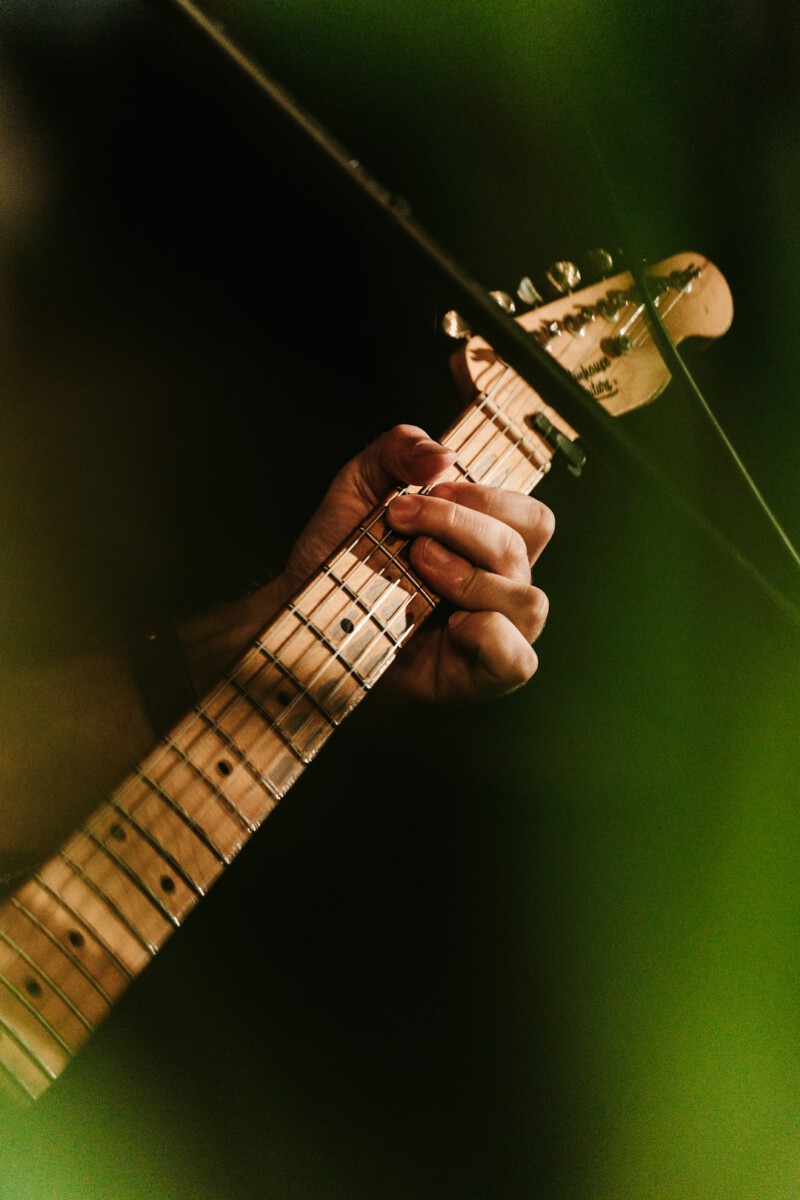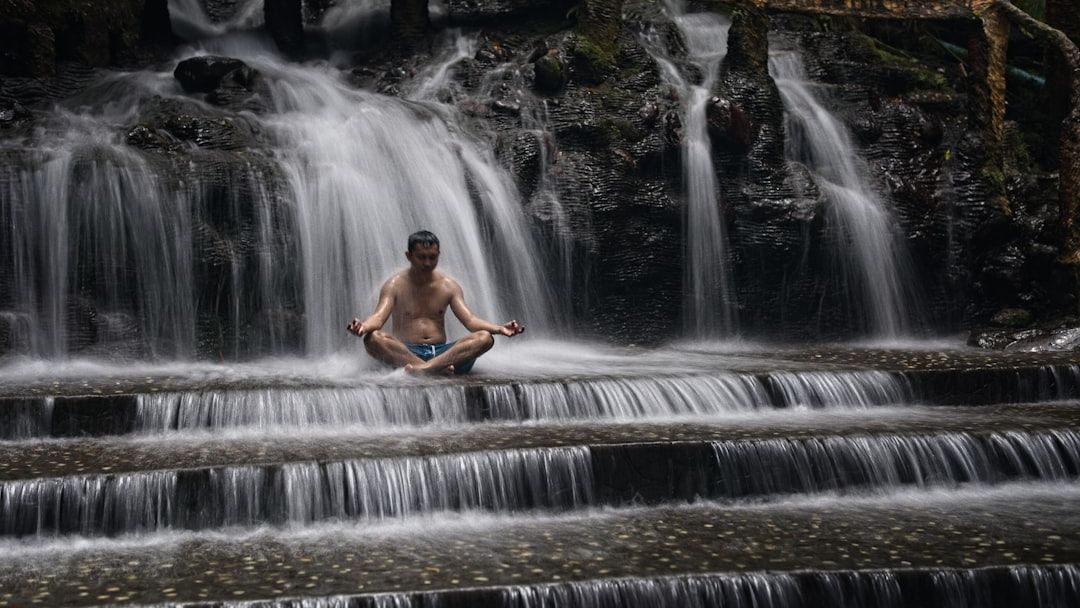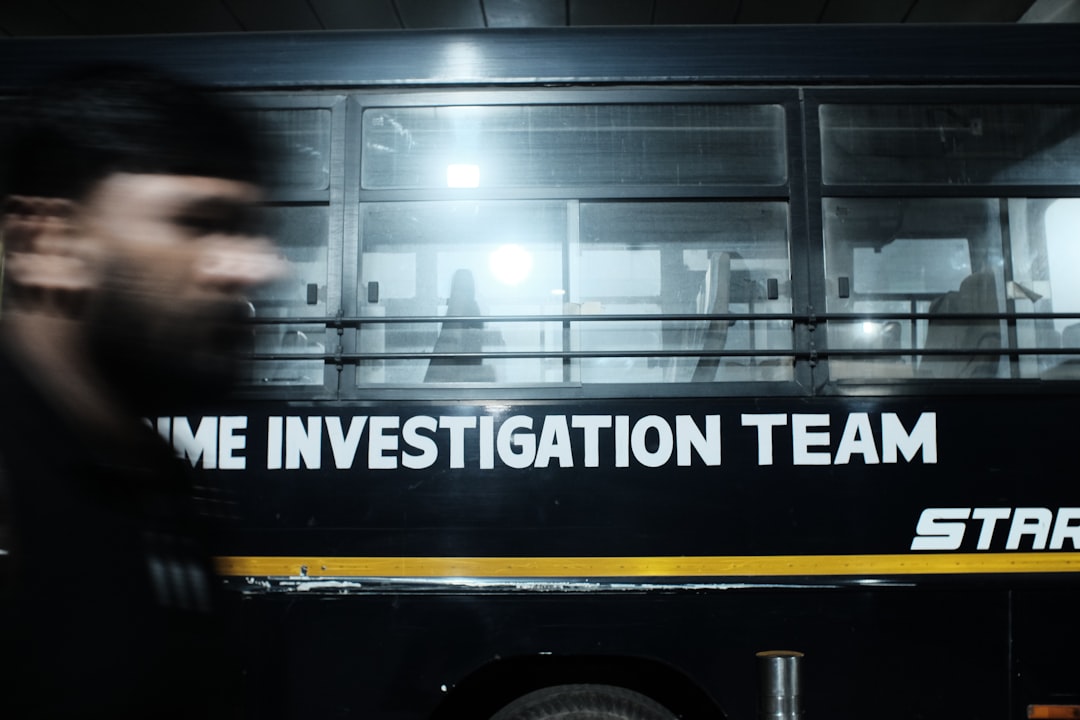Stairway to Heaven – Led Zeppelin (Jimmy Page)

When it comes to guitar solos that define generations, nothing touches the epic climax of “Stairway to Heaven.” In a 2023 Rolling Stone poll, it was named the most recognized guitar solo in rock history, and Jimmy Page himself revealed that this masterpiece was completely improvised. Page confessed “I winged it” with pride, explaining he had prepared the overall structure but not the actual notes, recording three different versions during the session. What makes this solo legendary isn’t just its technical brilliance, but how it perfectly mirrors the song’s journey from whispered intimacy to thunderous triumph. The way Page builds tension note by note, bend by bend, creates an emotional arc that still gives listeners goosebumps decades later. Its enduring presence in pop culture is a testament to its perfection, still serving as a benchmark for aspiring guitarists everywhere.
Eruption – Van Halen (Eddie Van Halen)

With just one minute and forty-two seconds, Eddie Van Halen blew the doors off what was thought possible on a guitar, inspiring countless aspiring guitarists to pick up the instrument for the first time. The track wasn’t even supposed to be on the album – Eddie was just warming up at the studio when producer Ted Templeman heard it and demanded they record it immediately. Eddie himself admitted he didn’t even play it perfectly, noting a mistake at the top end that still bothers him today. Yet “Eruption” fundamentally redefined the mechanics of guitar solos, introducing tapping techniques that became essential vocabulary for rock guitarists. The solo’s influence extends far beyond technique – it proved that guitar could be a completely solo instrument, capable of holding an audience’s attention without vocals or backing tracks. This technical opus would take most guitarists a lifetime to perfect, making Eddie’s casual brilliance all the more remarkable.
Free Bird – Lynyrd Skynyrd (Allen Collins)

If you’ve ever been to a rock concert, chances are you’ve heard someone yell “Play Free Bird!” – evidence of its legendary status. Originally added to give singer Ronnie Van Zant a chance to rest his vocal cords during performances, this four-minute-and-24-second guitar marathon spans 143 bars and was delivered by Allen Collins on his 1964 Gibson Explorer. Gary Rossington recalled Collins’ performance: “The whole long jam was Allen Collins himself. He was bad. He was super bad! He was bad-to-the-bone bad… the way he was doin’ it, he was just so hot!” The solo’s improvisational energy and relentless build make it the ultimate crowd pleaser. A 2023 Ultimate Classic Rock survey placed “Free Bird” among the all-time greats for its sheer impact on audiences, with its ability to whip crowds into a frenzy remaining unmatched as a timeless anthem for freedom and rebellion.
Comfortably Numb – Pink Floyd (David Gilmour)

David Gilmour’s solo in “Comfortably Numb” is often described as emotionally transcendent, with bending notes that feel like a voice crying out, each phrase dripping with longing and sorrow. In a recent Planet Rock poll, “Comfortably Numb” was crowned the winner, picking up 9.5% of total votes – an astonishing tally considering it was an open vote. The tone itself became legendary: Gilmour’s iconic black Strat with a DiMarzio FS-1 bridge pickup through a Hiwatt DR103, enhanced by the essential Electro-Harmonix Ram’s Head Big Muff pedal, giving him enough sustain to hold notes as long as he wanted. A 2023 survey consistently ranked it among the top progressive rock solos, with its raw emotion conveying more than technical skill – a soul speaking through six strings, elevating the song’s themes of isolation and yearning. What sets this apart isn’t just Gilmour’s technique, but how every note serves the song’s emotional narrative. Even the toughest listeners struggle not to feel overcome when hearing this solo, as it hits you right in the gut and spreads throughout your entire body until a piece of your soul is forever changed.
All Along the Watchtower – Jimi Hendrix

Jimi Hendrix’s take on “All Along the Watchtower” transformed Bob Dylan’s folk tune into a psychedelic rock classic, with guitarists invariably referring to it as a Hendrix cover rather than a Dylan original, proof of how much Hendrix made it his own. This song consistently tops lists of covers that are better than the original, earning recognition as the greatest solo in a cover version. Hendrix’s solo is a wild, improvisational ride that incorporates his signature use of the wah-wah pedal, showcasing his revolutionary approach to electric guitar. The solo perfectly captures Hendrix’s genius for turning familiar melodies into otherworldly experiences. His use of feedback, distortion, and sheer sonic exploration created a template for psychedelic guitar that countless musicians still follow today. It would be a sin to compose any guitar solo list without including Hendrix, considering his mastery of bends, wahs, slides, delay and reverb, with his playing style so otherworldly it’s baffling he could create such masterpieces at such a young age.
Hotel California – Eagles (Don Felder and Joe Walsh)

The title track from the Eagles’ fifth album, “Hotel California” frequently tops greatest guitar solo polls, with the solo beginning at 4:20 and forming an extended coda where guitarists Don Felder and Joe Walsh trade licks before joining together for iconic harmonized lines at 5:39. Their interlocking harmonies and melodic lines create a tapestry of sound that is instantly recognizable even to non-musicians, with the solo’s structure building from subtle licks to a breathtaking crescendo that mirrors the song’s mysterious and cinematic vibe. The harmony lines work through a relatively simple concept: one guitar plays an arpeggio of every chord while the harmony is created by the other guitar always playing one note lower in the chord. According to a 2023 Billboard report, “Hotel California” remains one of the most played classic rock songs on radio, much of which is owed to its unforgettable solo, with its balance of complexity and accessibility setting it apart as a true classic. The dual-guitar approach became a blueprint for rock bands seeking to create epic, cinematic moments within their songs.
November Rain – Guns N’ Roses (Slash)

Guitar World ranked Slash’s guitar solo in “November Rain” number 6 on their list of “The 100 Greatest Guitar Solos” in 2008. Slash reported that his guitar solo in the song’s album version developed directly from an improvisation. The band jokingly called it “the Layla song,” referencing a similarly-constructed rock song with a long, instrumental second part, and it was later preceded by the coda from Layla on the Not in This Lifetime… Tour. As of October 2024, “November Rain” is the most viewed song on YouTube released in the 1990s, with its music video becoming the first pre-YouTube video to surpass one billion views in July 2018, and reaching two billion views in February 2023. The song features multiple guitar solos that showcase Slash’s melodic sensibilities and technical prowess. His ability to craft solos that serve both the song’s emotional arc and provide showcase moments for his virtuosity made this a defining moment in 1990s rock guitar.
Sweet Child O’ Mine – Guns N’ Roses (Slash)

In the summer of 1988, Guns N’ Roses achieved their only U.S. No. 1 hit with “Sweet Child O’ Mine,” a song spearheaded by Slash’s guitar riff and solo. “Sweet Child o’ Mine” placed number 37 on Guitar World’s list of the “100 Greatest Guitar Solos,” came in at number three on Blender’s 500 Greatest Songs Since You Were Born, and in March 2005, Q magazine placed it at number six in its list of the 100 Greatest Guitar Tracks, with its famous riff voted the number one riff of all-time by Total Guitar magazine readers in 2004. The song originated during a jam session when Slash began playing a “circus” melody while making faces at drummer Steven Adler, which within an hour had become something entirely different as the band built around it. Axl Rose famously hated the radio edit that cut much of Slash’s guitar solo, stating his favorite part was “Slash’s slow solo; it’s the heaviest part for me,” criticizing radio stations for cutting it just to create more space for commercials. The solo perfectly balances accessibility with technical brilliance, making it both radio-friendly and a guitarist’s dream to learn.
Purple Haze – Jimi Hendrix

Purple Haze appears on various greatest guitar solo lists, with fans consistently arguing it deserves to be ranked much higher than its typical placements. This track represents Hendrix at his most innovative, using feedback, distortion, and unconventional chord progressions to create something that sounded like it came from another planet. The solo showcases Hendrix’s ability to make the guitar sound like it was alive, breathing and screaming with its own voice. His use of the wah-wah pedal, combined with his masterful control of feedback, created textures that had never been heard before in popular music. The solo isn’t just about technical prowess – it’s about pushing the boundaries of what the electric guitar could express. Hendrix’s playing style was so otherworldly that it’s baffling to believe he could come up with such masterpieces at such a young age, making him an icon to many guitarists for good reason. “Purple Haze” remains a cornerstone of psychedelic rock and a testament to Hendrix’s revolutionary vision.
While My Guitar Gently Weeps – The Beatles (Eric Clapton)

By 1968, George Harrison was writing compositions that rivaled his bandmates, but when he couldn’t get enthusiasm for “While My Guitar Gently Weeps,” he invited Eric Clapton to play on the session, knowing it would put the Beatles on good behavior. Using Harrison’s 1957 “Lucy” Gibson Les Paul through a Fender Deluxe amp, Clapton created a harrowing song within a song, with his descending bends, release notes, and inimitable vibrato weaving a dramatic narrative that builds to a shattering climax. Clapton’s performance was ranked 42nd in Guitar World’s 2008 list of the “100 Greatest Guitar Solos.” Rolling Stone ranked “While My Guitar Gently Weeps” seventh on the “100 Greatest Guitar Songs of All Time.” Clapton’s solo on this Beatles classic is wonderfully restrained and melodic while still imparting a sense of passion and drama. The performance stands as one of rock’s great guest appearances, with Clapton’s blues-based approach perfectly complementing Harrison’s Indian-influenced composition.
Layla – Derek and the Dominos (Duane Allman)

Many people think that the iconic solo on “Layla” was played by Eric Clapton, but it wasn’t – the beautiful outro slide solo was actually played by Duane Allman. The song features one of rock music’s most recognizable dual-guitar conversations, with Clapton and Allman feeding off each other’s energy throughout the track. Allman’s slide guitar work on the outro has become one of the most celebrated examples of the technique in rock history. His ability to make the guitar sing and cry through the slide created an emotional intensity that perfectly matched the song’s themes of unrequited love and obsession. The interplay between Clapton’s rhythm work and Allman’s lead playing demonstrates what happens when two guitar masters push each other to new heights. Classic Rock magazine ranked this performance at number 16 in their 100 Greatest Guitar Solos list, crediting Duane Allman’s contribution. The song remains a masterclass in blues-rock guitar interaction and emotional expression through the instrument.
Johnny B. Goode – Chuck Berry

Chuck Berry’s “Johnny B. Goode” appears at number 15 on Classic Rock’s 100 Greatest Guitar Solos list, representing the foundation of rock and roll guitar. Rock ‘n’ roll pioneer Chuck Berry delivers such a cool solo on his classic tune. This 1958 masterpiece essentially created the template for rock guitar solos, introducing the concept of guitar as lead instrument to popular music. Berry’s duck walk and showmanship were matched by his revolutionary approach to the guitar, combining country picking with blues bends and R&B rhythms. The solo in “Johnny B. Goode” features Berry’s signature double-stops and rapid-fire single-note runs that would influence every rock guitarist who followed. His approach was both technical and accessible, creating licks that sounded complex but could be learned by dedicated players. The song’s solo represents the birth of rock guitar as we know it, establishing Berry as the father of rock and roll guitar playing. Without this track, the entire landscape of popular music would be different.
Beat It – Michael Jackson (Eddie Van Halen)

Eddie Van Halen’s guest appearance on Michael Jackson’s “Beat It” ranks among Guitar World’s 100 Greatest Guitar Solos list. The track appears at number 81 on Rolling Stone’s “100 Greatest Guitar Songs of All Time.” This collaboration between the King of Pop and the guitar virtuoso created one of the most unexpected and successful musical partnerships of the 1980s. Van Halen’s contribution wasn’t just a solo – he restructured parts of the song and added his signature tapping techniques and harmonic squeals that became iconic elements of the track. The solo perfectly bridged the gap between pop accessibility and rock guitar prowess, introducing Van Halen’s style to a massive mainstream audience. His work on “Beat It” proved that guitar solos could enhance pop songs without overwhelming them. The collaboration required Jennifer Batten to master this solo for Michael Jackson’s biggest tours, where she had to play funk, soul, metal, and Van Halen’s “Beat It” solo every night. The solo remains a perfect example of how rock guitar can elevate pop music to new artistic heights.
Bohemian Rhapsody – Queen (Brian May)

Brian May’s solo in “Bohemian Rhapsody” is a study in restraint and drama, where rather than overwhelming the song’s intricate structure, May’s playing enhances the operatic grandeur and emotional depth. The track ranks among the top 50 on various greatest guitar solos lists.





![BREAKING: Rob Reiner & Wife Were Killed by Their Son Who Battled Drug Addiction [Reports]](https://everyday-states.com/wp-content/uploads/2025/12/1765818844773_rob_reiner.0842.jpeg)